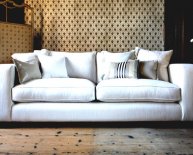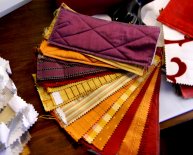
Stretch Textile
Standard Test Method for Stretch Properties of Textile Fabrics – CRE Method
Significance and Use
5.1 This method is used to determine the stretch and growth properties which a garment made of the fabric may be expected to exhibit during use.
5.2 This is a new method and therefore the history of data is very small, however the excellent agreement of between-laboratory data suggest this method may be considered for acceptance testing of commercial shipments.
5.2.1 If there are differences of practical significance between reported test results for two laboratories (or more), comparative test should be performed to determine if there is a statistical bias between them, using competent statistical assistance. As a minimum, samples used for such comparative tests should be as homogeneous as possible, drawn from the same lot of material as the samples that resulted in disparate results during initial testing, and randomly assigned in equal numbers to each laboratory. Other fabrics with established test values may also be used for these comparative tests. The test results from the laboratories involved should be compared using a statistical test for unpaired data, at a probability level chosen prior to the testing series. If bias is found, either its cause must be found and corrected, or future test results must be adjusted in consideration of the known bias.
1. Scope
1.1 This test method covers the determination of the amount of fabric stretch and fabric growth after a specified extension and held for a specified time.
1.2 While this method can be used for any fabric, knit fabrics having high stretch are better measured by test method D2594.
1.3 This test method should not be used to measure the breaking strength and elongation of woven fabrics, which is covered in Test Methods D5034 and D5035.
1.4 The values listed in either SI units or inch-pound units are to be regarded separately as the standard. Within the text, the inch-pound units are shown in parentheses. The values stated in each system are not exact equivalents; therefore, each system shall be used independently of the other. Combining values from the two systems may result in nonconformance with specification.
1.5 This standard does not purport to address all of the safety concerns, if any, associated with its use. It is the responsibility of the user of this standard to establish appropriate safety and health practices and determine the applicability of regulatory limitations prior to use.
2. Referenced Documents (purchase separately)
ASTM Standards
ICS Code
ICS Number Code 59.080.30 (Textile fabrics)

















